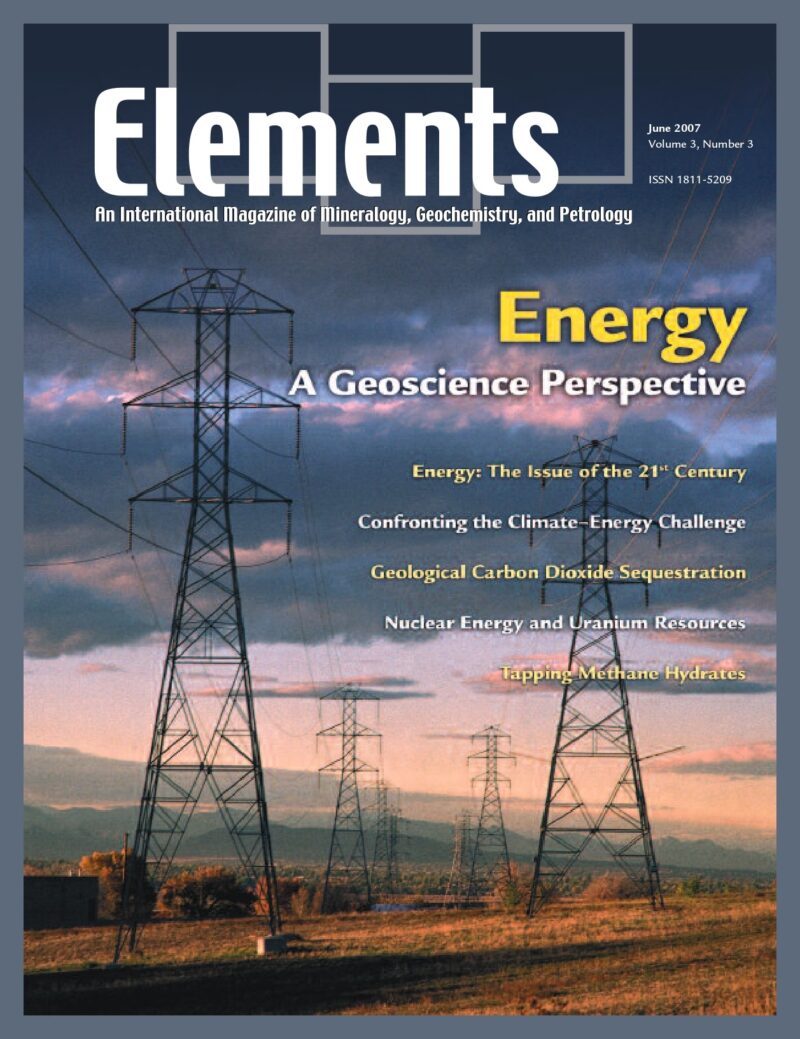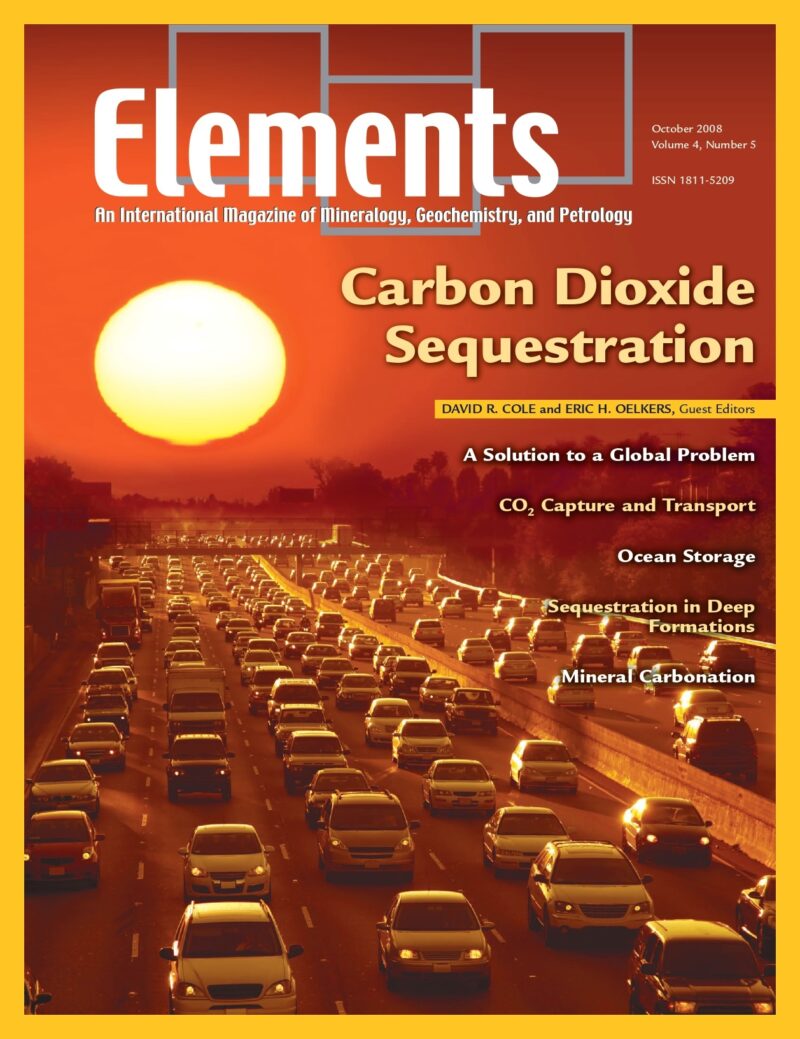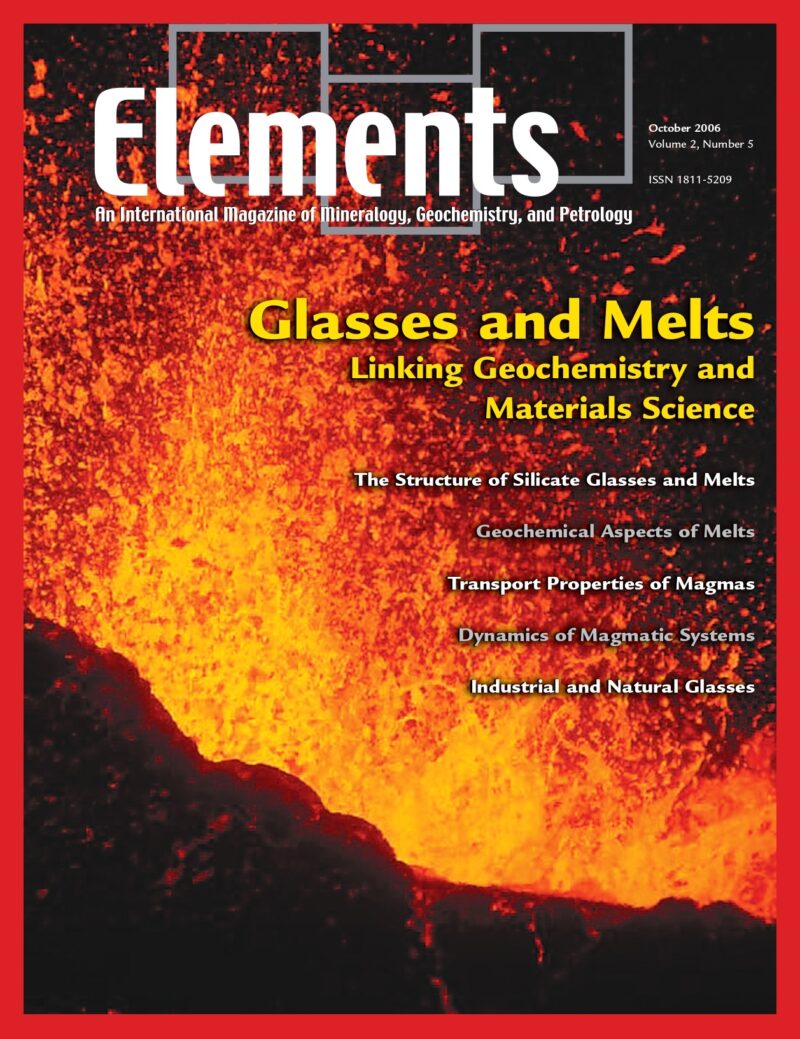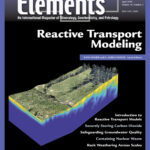
Reactive Transport Modeling, April 2019, Vol. 15, No. 2
June 28, 2024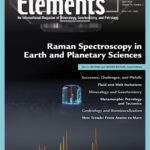
Raman Spectroscopy In The Earth And Planetary Sciences, April 2020, Vol. 16, No. 2
June 28, 2024Abiotic Hydrogen And Hydrocarbons In Planetary Lithospheres, February 2020, Vol. 16, No. 1
$20.00
Molecular hydrogen (H2), methane, and hydrocarbons with an apparent abiotic origin have been observed in a variety of geologic settings, including serpentinized ultramafic rocks, submarine hydrothermal vents, and deep fractures within ancient cratons. Recent discoveries have reported the presence of hydrogen emanating from the icy crust of Saturn’s moon Enceladus, and methane in the atmosphere of Mars.
Abiotic Hydrogen And Hydrocarbons In Planetary Lithospheres
February 2020, Vol. 16, No. 1
Molecular hydrogen (H2), methane, and hydrocarbons with an apparent abiotic origin have been observed in a variety of geologic settings, including serpentinized ultramafic rocks, submarine hydrothermal vents, and deep fractures within ancient cratons. Recent discoveries have reported the presence of hydrogen emanating from the icy crust of Saturn’s moon Enceladus, and methane in the atmosphere of Mars. Owing in large part to the utilization of hydrogen and methane by chemosynthetic biological communities on Earth (and maybe other planetary bodies), geologic production of these compounds has become the subject of intense scientific study. Geologically produced hydrogen and methane are also of interest as possible energy resources. This issue highlights recent developments in the understanding of geologic sources of hydrogen and methane, the biological utilization of these compounds, and the potential for human exploitation of these resources.
Why You’ll Love Elements Magazine:
- Expert Contributors: Articles written by renowned researchers in the field of geoscience.
- Engaging Content: Join a community of readers who are passionate about Elements.
- Exceptional Quality: Each issue is printed on high-quality paper with stunning visuals and detailed illustrations that bring complex scientific concepts to life.
Order your copy of the February 2020 issue of Elements magazine today and delve into abiotic hydrogen and hydrocarbons in planetary lithospheres.
Related products
-
Energy: A Geoscience Perspective, June 2007, Vol. 3, No. 3
$20.00The issue of energy resources in the future may be one of the most important in the 21st century. Future climate change and the ways to abate it while still supplying needed energy will impact future political relations, world economics, human health, and the environment.
-
Carbon Dioxide Sequestration, October 2008, Vol. 4, No. 5
$20.00Storage of carbon in the subsurface involves introduction of supercritical CO2 into rock formations beneath the surface of the Earth, typically at depths of 1000 to 4000 meters. Although CO2 is a relatively benign substance, the volume being considered is large.
-
Glasses And Melts: Linking Geochemistry And Materials Science, October 2006, Vol. 2, No. 5
$20.00Geological interest in studying melts stems from early recognition that melts play a fundamental role in determining the physical and chemical behaviour of magmas and magmatic processes. However, due to the inherent difficulties associated with working at high temperatures, much of the geological research over the last 30 years has used quenched melts or glasses as proxies for melts themselves.


